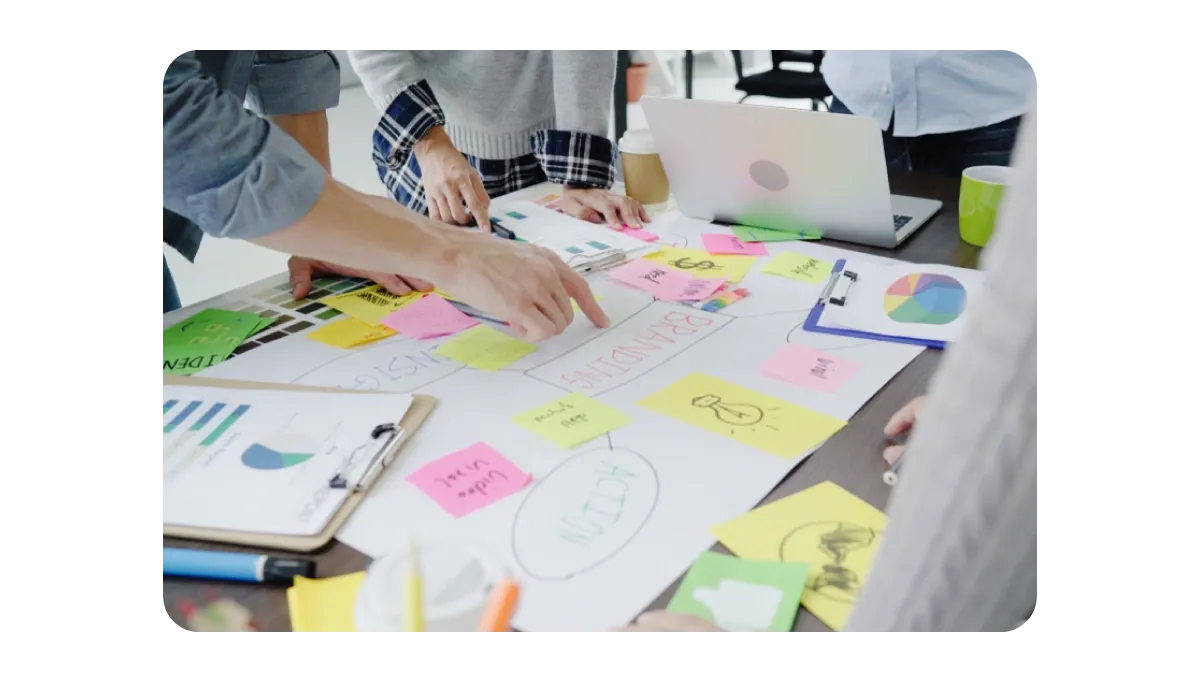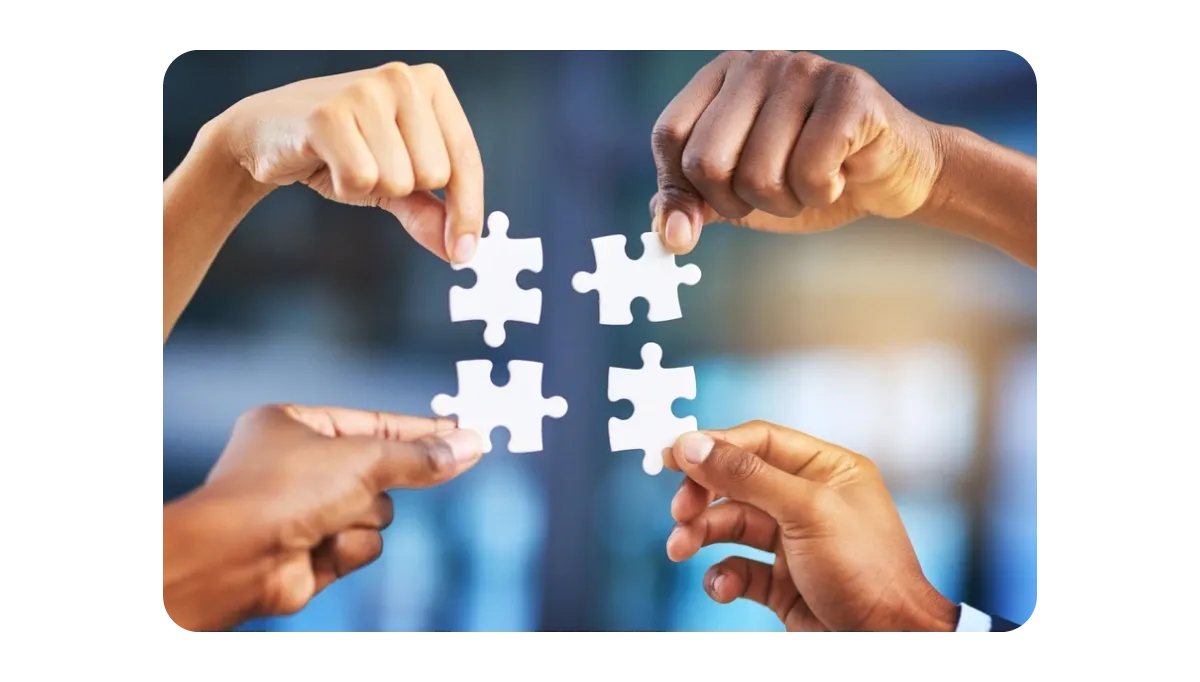The Role of HR in Workplace Wellness Programs
What happens when your most talented employees feel exhausted, disengaged, or overlooked? They burn out, leave, and take your business momentum with them.
In a world where exhaustion, disengagement, and burnout are common, employee well-being is more than just a trend. It is a business-critical strategy. According to Gallup, burnout costs companies around $322 billion in lost productivity globally. That's not just a stat. That's your bottom line at risk.
And guess who can turn this around perfectly? You are.
As HR leaders, you're in the best position to reverse this trend. Your deep understanding of employees' needs and motivations makes you the natural architect of a healthier, more engaged workforce. From shaping flexible work policies to launching step challenges, HR professionals are now leading the charge in workplace wellness.
This blog explores how HR can design, manage, and enhance wellness programs that support not only individual health but also overall company success. Are you ready to lead the wellness movement in your workplace?
Why HR Plays a Central Role in Workplace Wellness?

HR professionals hold a unique position of influence within the organization. They bridge the gap between leadership goals and employee needs, enabling them to develop wellness strategies that are both practical and people focused.
On the one hand, HR works closely with leadership to align wellness programs with broader business objectives, such as productivity, retention, and engagement. On the other hand, they have firsthand insight into employee experiences through regular feedback, pulse surveys, and ongoing communication.
This dual perspective makes HR essential in building wellness initiatives that are grounded in empathy and driven by data.
When HR leads wellness efforts, the results speak for themselves. According to SHRM, organizations with HR-managed wellness programs report up to 60 percent higher engagement rates compared to those without structured oversight.
HR teams are skilled at tailoring communication, encouraging participation, and creating inclusive offerings that resonate with diverse employee groups. One example is Salesforce. Their HR department introduced a global wellness reimbursement plan that allows employees to select activities that best support their health.
Whether it was fitness classes, meditation apps, or therapy sessions, flexibility led to strong participation across regions and departments.
HR's involvement does more than support wellness. It transforms it into a sustainable, business-aligned strategy that benefits everyone.
The Essential Roles of HR in Workplace Wellness Programs

HR teams are the backbone of every successful wellness initiative. You're not just ticking boxes or pushing out policies. You're creating programs that shape how employees feel, work, and show up every day.
From planning and communication to execution and feedback, each role you take on has a direct impact on employee health, engagement, and the overall work environment.
Let's walk through the key responsibilities you carry and how each one contributes to building a healthier, more productive workplace.
Strategic Planning and Program Development
In order to make a wellness program successful, HR professionals must first focus on strategic planning.
A strong wellness program begins with thoughtful planning. HR professionals lead this effort by identifying what employees need and ensuring those needs align with company goals.

Conducting Needs Assessments and Employee Surveys
The best way to build a relevant program is to ask the right questions. HR gathers insights on employee health, lifestyle habits, and mental health needs through surveys and feedback tools. Tools such as this help create a wellness plan that feels personal and practical.
Aligning Wellness Goals with Business Objectives
Wellness should support more than just individual health. HR connects wellness efforts to business goals, such as reducing healthcare costs, increasing productivity, and enhancing job satisfaction. This approach also helps secure leadership support and resources.
Designing Inclusive and Holistic Programs
HR teams know that one solution doesn't fit all. From remote teams to frontline staff, programs should include a mix of physical activity options, mental health support, and flexibility to suit different work schedules.
Using Data to Guide Strategy
Once the program is up and running, HR tracks participation and results. With tools like Vantage Fit, you can easily identify trends, track engagement, and refine your strategy based on what employees use and enjoy.
Communication and Employee Engagement

Even the most well-designed wellness program needs strong communication to succeed. HR professionals act as the bridge that connects the program to employees in a way that feels relatable and accessible.
Creating Clear and Consistent Messaging
If employees don't understand what's offered, they probably won't join.HR teams craft simple, engaging messages that explain the program's benefits, whether it's about accessing mental health support or staying active during the workday. The goal is to create excitement and trust.
Using Multiple Channels to Reach Everyone
Every employee consumes information differently. Some individuals may respond to emails, while others prefer to use Slack, WhatsApp, or receive in-person updates. HR shares wellness content across multiple channels to ensure no one misses out, especially those with varying work schedules or remote roles.
Encouraging Employees Through Leadership Involvement
When leaders take part in wellness activities, employees feel more encouraged to join in. HR can invite managers to participate in walking challenges, share personal stories about managing stress, or discuss openly the importance of work-life balance. This helps create a supportive culture from the top down.
Also Read: From Burnout to Balance: 5 Steps to Enhance Employee Wellness and Work-Life Balance
Building Engagement with Recognition and Rewards
People are more likely to stay involved when their efforts are noticed. HR can boost engagement by celebrating milestones, recognizing participants in team meetings, or offering small rewards and incentives. These actions not only improve employee morale but also create momentum for long-term participation.
Implementation and Program Execution
Once a wellness plan is in place, HR takes the lead in turning ideas into action. This phase focuses on coordination, consistency, and ensuring a seamless experience for everyone involved.
Organizing Wellness Events and Activities

HR professionals handle the details behind every wellness activity, from scheduling to logistics. Whether it's a virtual mindfulness session or an office fitness challenge, precise planning ensures that employees can easily participate, regardless of their work schedule or location.
Coordinating with Vendors and Wellness Partners
Many programs involve external partners, such as mental health coaches, nutritionists, or fitness instructors. HR selects reliable vendors, manages communication, and ensures offerings align with the company's wellness goals and supports employee health.
Providing Equal Access Across the Workforce
Not all employees work from desks or during typical hours. HR works to make sure wellness resources are accessible to remote, on-site, and hybrid teams alike. This fosters a more inclusive workplace environment, enabling more employees to feel supported and valued.
Tracking Progress and Addressing Challenges
Even during execution, HR continues to monitor employee engagement. If an activity isn't gaining traction or there's low participation, quick adjustments can make a big difference. Real-time tracking tools help HR make informed decisions on the go.
Monitoring, Evaluation, and Continuous Improvement
Launching a wellness program is just the beginning. To make a lasting impact, HR needs to track what works, identify what doesn't, and make thoughtful improvements along the way.
Tracking Engagement and Participation
It's essential to know how employees interact with the program. HR monitors participation in wellness challenges, use of mental health resources, and completion of key activities. This helps spot trends and understand what supports employee health.
Collecting Feedback from Employees

Honest feedback helps shape better experiences. HR can use short surveys, open-ended feedback, or quick polls to gather insights into what employees enjoy, what they find valuable, and where the program can be improved. This also boosts employee engagement by showing their voices matter.
Measuring Outcomes and Reporting Progress
Leadership Needs to See Results. HR gathers data on productivity, healthcare costs, absenteeism, and job satisfaction to assess the effectiveness of the program. Regular reporting keeps wellness aligned with business priorities and justifies continued investment.
Making Adjustments Based on Insights
No program is perfect from day one. HR uses insights to tweak schedules, introduce new activities, or enhance mental health support. These small changes keep the program fresh, flexible, and responsive to the needs of employees.
Common Challenges and Solutions
Even the most well-intentioned wellness programs can face a few bumps along the way. From low participation to limited resources, HR professionals often juggle multiple challenges while trying to support employee health and well-being. The good news is that each challenge comes with a practical solution.
Common Challenges
One major hurdle is low employee participation. Some employees may not feel motivated, while others may not even be aware of the program. Designing wellness initiatives that accommodate diverse work schedules and roles can also be challenging.
Budget limitations make it harder to offer variety or access to the right tools. Furthermore, many HR teams struggle to track outcomes and demonstrate the value of wellness programs without proper systems in place.
Solutions That Work

Start with strong communication. Promote programs using multiple channels and encourage leaders to participate. This makes wellness more visible and relatable. Offer flexible options that support diverse needs, such as virtual activities, on-demand content, or short wellness tasks during work hours.
Tools like Vantage Fit can help automate tracking, improve employee engagement, and reduce manual labor. With the proper support and strategy, wellness programs can become a natural part of the workplace culture.
Final Thoughts
With HR at the helm, wellness programs can evolve from a set of initiatives into a thriving, integral part of your workplace culture. By continuing to innovate and adapt, HR ensures these programs not only benefit individual employees but also contribute to overall business success.
But translating intent into consistent action isn't always easy. With limited time, constrained budgets, and multiple priorities pulling focus, sustaining an effective wellness program can quickly become a challenge.
That’s where Vantage Fit comes in.
Vantage Fit helps HRs streamline everything. Whether you're organizing wellness challenges, tracking participation, supporting mental health, or rewarding employees, it all happens on one platform. This makes it easier to launch, manage, and scale wellness programs that support your people and your goals.
Want to make wellness easier for your team and your employees? Try Vantage Fit and see how simple, effective, and employee-friendly wellness can be.
FAQs
1) Does HR handle employee wellness and health benefits?
Yes, HR oversees both wellness initiatives and employee health benefits.
2) Can HR support employee mental health?
Yes, by providing access to mental health resources. You can also promote a supportive work environment.
3) How can HR ensure wellness programs are inclusive?
Offer flexible options that cater to various roles, needs, and schedules.
4) What if HR has a limited budget?
Use affordable wellness platforms like Vantage Fit to manage programs efficiently.
5) How can HR measure the success of wellness programs?
Track participation, feedback, and outcomes using data and analytics tools.




